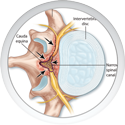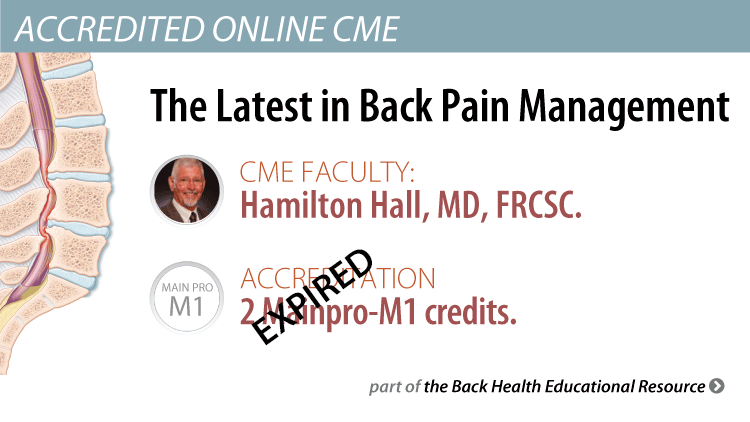 |
This evidence-based learning program has been developed by physicians, in association with the Canadian Spine Society, for primary care physicians, educators, and other health professionals. Learners will utilize this program to assist with the diagnosis, sound management, and appropriate treatment of Back Pain in patients.
- This program runs in a sequence, and is accompanied by informative illustrations, and animations. To advance you must complete the quizzes.
- Best viewed with accompanying voice-over narration.
- You may pause, rewind, or fast-forward at any point.
- Slides with links to figures or tables will pause automatically to allow the user time to view the additional material.
|







